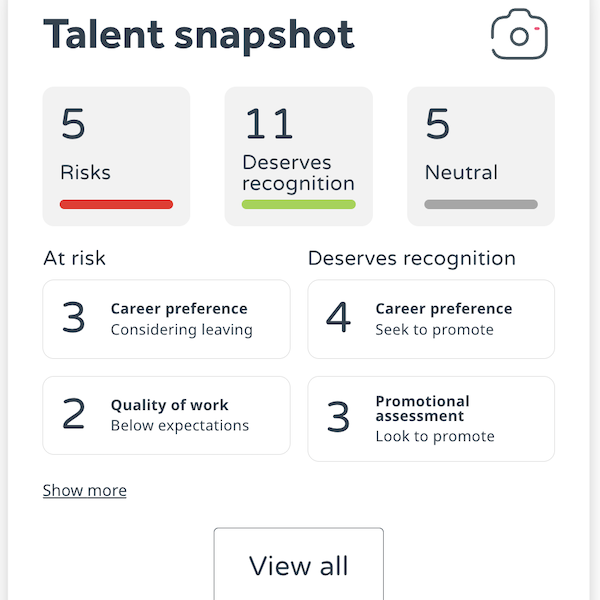Employee churn can be a major challenge for businesses, as high levels of staff turnover is hugely costly and disruptive to the workplace. That’s why it’s so vital for businesses to understand why employees are leaving and what they can do to retain their key players and top performers. Learn about the causes of high churn rates and the steps you can take to reduce employee turnover below.
The cost of employee turnover
Employee turnover can be expensive. According to the Society for Human Resource Management, the average cost of replacing a salaried employee is six to nine months’ worth of their salary.
This includes the cost of recruiting, hiring, and training a new employee and the loss of productivity during the transition period. High staff turnover levels can also negatively impact morale and team cohesion, further impacting the bottom line.
Why employees leave
There are many reasons why employees choose to leave a company, but a few common reasons stand out. A survey by the Work Institute found that more than one-third of employees who left their jobs in 2019 cited a lack of opportunities for career growth and development as the main reason.
Poor management was also cited as a major reason for leaving, with 30% of employees who left their jobs in 2019 pointing to this as the main reason.
Company culture can also be a significant factor in employee turnover. A survey by Deloitte found that approximately 60% of employees would leave their current job for a different culture, even if the pay was less. Another study by the Society for Human Resource Management found that company culture was one of the top reasons employees chose to stay with their current employer or leave for a new job.
What you can do to reduce employee churn
To reduce employee churn rates, it’s essential to take action to address these underlying issues. Here are a few steps you can take:
Offer opportunities for growth and development
Encouraging your employees to learn and grow in their careers will help them feel fulfilled and engaged in their work. By investing in their professional development, you’ll be helping them grow their skills and become more valuable members of your team.
This can be anything from an online L&D course to working alongside or shadowing more experienced employees. A quality performance management review will enable your managers and employees to identify exactly where these opportunities are.
Foster a positive company culture
A positive and supportive workplace culture can help foster employee engagement and reduce turnover rates. This can include things like promoting open communication, recognising and rewarding employees, and encouraging a greater work-life balance.
Simple steps, such as ensuring senior leaders and line managers lead by example, encouraging employees to take their full lunch breaks, not emailing outside of working hours and acknowledging colleagues’ successes can contribute enormously to creating a positive company culture.
Encourage work-life balance

For example, remote working has become commonplace over the last few years as a health and safety measure, however, many employees have since lauded its benefits for their mental health and wellbeing.
Hybrid and flexible working provides a greater work-life balance by cutting out commute times, ensuring employees can spend more time with their families, and reducing additional expenses such as travel and lunches that can be spent elsewhere during a cost-of-living crisis.
Provide a sense of purpose
Helping employees understand the purpose of their work and how it fits into the larger mission of the company can help increase job satisfaction and reduce the likelihood of employees leaving.
Finding meaning and purpose in our work is the ultimate motivator. But how can you tell if your employees feel a sense of purpose? And successfully act on it? An employee engagement survey can rapidly identify your people’s feelings about work.
For example, WeThrive’s intelligent survey asks your people if they find their work meaningful, and if they do not, it asks additional questions such as “I’d like to better understand how my work helps others” or “I need more challenge and opportunities to learn” to uncover the root cause of why they don’t.
HR and managers are then provided with easy-to-follow action plans that enable them to instantly take action. For example, if your people would like more challenges and opportunities to learn, they can take these simple steps:
- Encourage their team to offer solutions & solve problems – these provide the best development opportunities
- Create space in every team meeting for people who volunteer ideas, act quickly to back ideas and take them into action
- Give public praise that links individual development to results
- Share their own insights about how their role is growing & changing and what they have learnt from that
Foster communication
Encouraging open and honest communication between employees and management can help create a more positive and supportive workplace environment, reducing the likelihood of employees feeling dissatisfied or disengaged.
Regular check-ins, open-door policies, and opportunities for feedback help create a more transparent and communicative workplace.
Put this into practice
High employee churn rates can be a major challenge for businesses, but taking the steps to understand the causes and finding ways to retain employees can have a major impact on the bottom line.
By investing in professional development, fostering a positive workplace culture, and offering competitive benefits and work-life balance, businesses can help reduce employee turnover rates and create a more engaged and fulfilled workforce. With the cost of replacing a salaried employee estimated at six to nine months’ worth of their salary, it’s clear that the benefits of reducing employee churn are substantial.
Book a demo with WeThrive to learn how you can assess the factors contributing to high churn rates and make the necessary changes to retain your best employees and improve overall employee retention. Alternatively, read our white paper How to protect your business from “The Great Resignation” to learn more.




